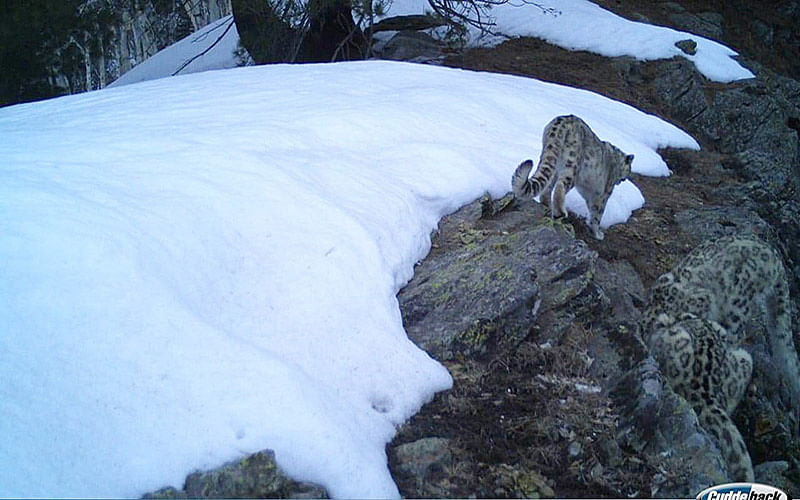Srinagar, Jan 30: In an effort for snow leopard conservation, officials have announced a count of 718 as part of the Snow Leopard Population Assessment in India (SPAI) Programme.
The survey, conducted from 2019 to 2023, is the first-ever scientific exercise of its kind and sheds light on the elusive species’ population and distribution.
During the SPAI exercise, a total of 241 unique snow leopards were photographed.
The comprehensive data analysis further revealed the estimated snow leopard population in various states and union territories with 477 in Ladakh, 124 in Uttarakhand, 51 in Himachal Pradesh, 36 in Arunachal Pradesh, 21 in Sikkim, and nine in Jammu and Kashmir.
The initiative covered over 70 percent of the potential snow leopard range in the country, spanning approximately 1.20 lakh sq km of crucial habitat across the trans-Himalayan region, including Ladakh and Jammu and Kashmir as well as Himachal Pradesh, Uttarakhand, Sikkim, and Arunachal Pradesh.
The Wildlife Institute of India (WII), serving as the National Coordinator, spearheaded the SPAI programme with support from snow leopard range states and conservation partners – the Nature Conservation Foundation, Mysuru, and WWF-India.
The exercise involved collaboration with forest and wildlife staff, researchers, volunteers, and contributions from knowledge partners.
Union Minister of Environment, Forest, and Climate Change, Bhupender Yadav unveiled the report on the Status of Snow Leopards in India during the National Board for Wildlife meeting in New Delhi.
The report underscores the importance of the SPAI as a groundbreaking initiative, providing crucial insights into the snow leopard population, spatial distribution, and habitat preferences.
The SPAI exercise employed a two-step framework.
Firstly, it evaluated snow leopard spatial distribution using an occupancy-based sampling approach aligned with the Ministry of Environment, Forest, and Climate Change guidelines.
Subsequently, camera traps were strategically deployed across identified stratified regions for estimating snow leopard abundance.
The report highlights the success of the SPAI.
It also emphasises the need for continuous monitoring to ensure the long-term survival of snow leopards.
To this end, a dedicated Snow Leopard Cell at WII under the MoEFCC is proposed, focusing on long-term population monitoring with structured study designs and consistent field
surveys.
Recognising the importance of regular assessments, the report suggests that states and union territories consider adopting a periodic population estimation approach (every 4th year) within the snow leopard range.
These assessments will identify challenges, address threats, and formulate effective conservation strategies, for safeguarding these majestic creatures.







